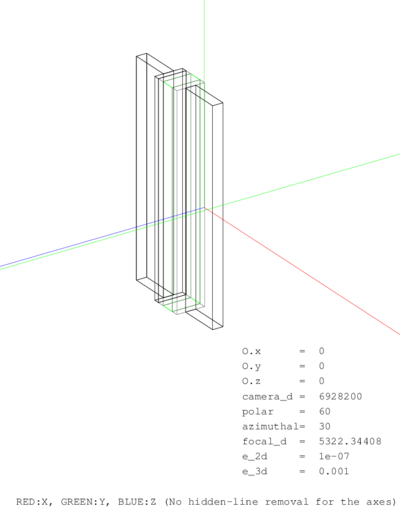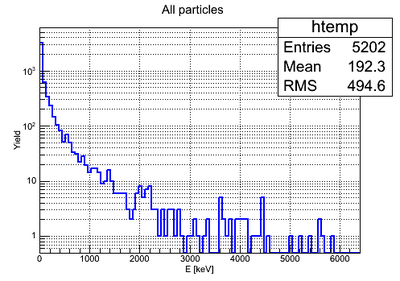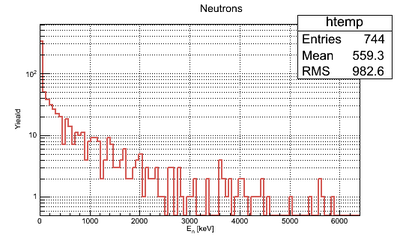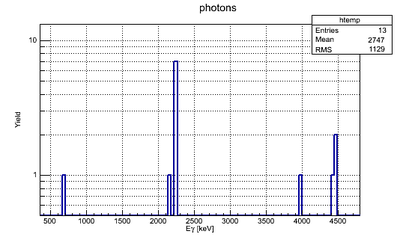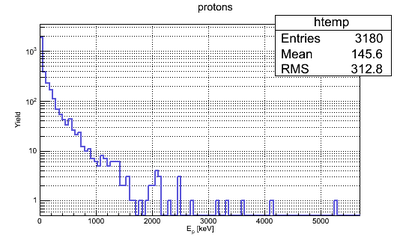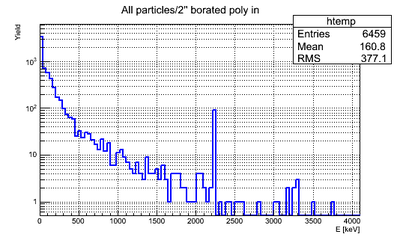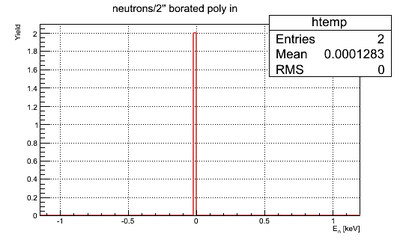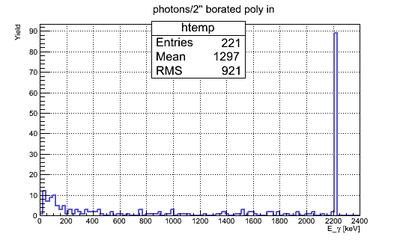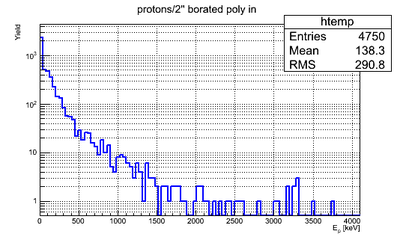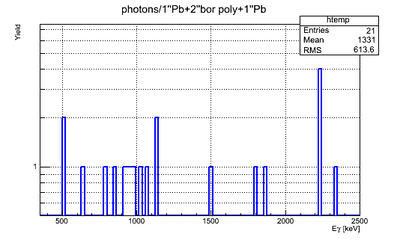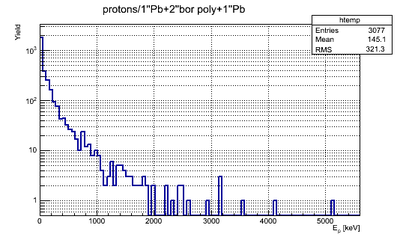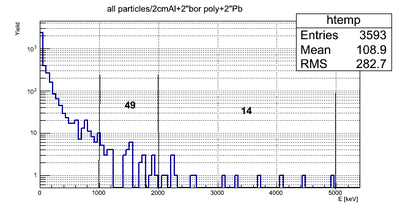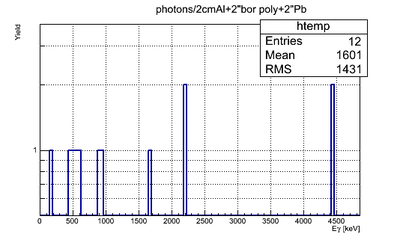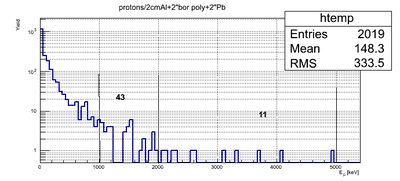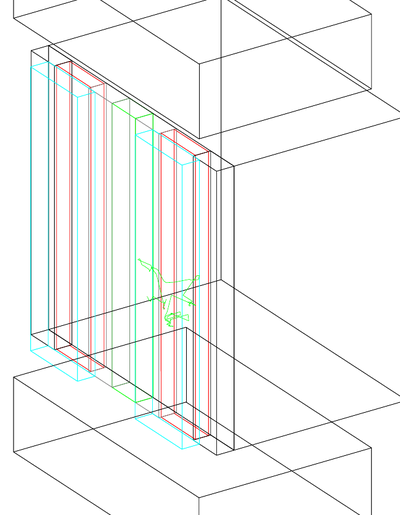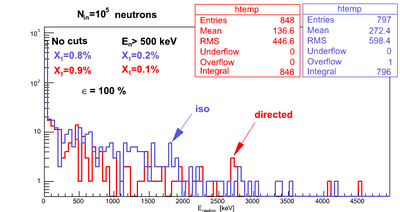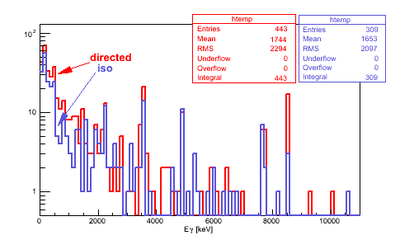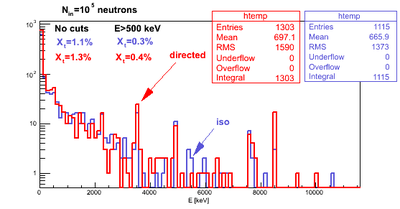Difference between revisions of "X-talk between n-dets"
| Line 124: | Line 124: | ||
[[File:neutrons_iso_dericted.png | 400px]] | [[File:neutrons_iso_dericted.png | 400px]] | ||
| − | Photons were generated through <math>(n,\gamma)</math> reaction on the materials of borated poly and concrete. Energy spectrum of the photons is presented for both types of neutron sources | + | Photons were generated through <math>(n,\gamma)</math> reaction on the materials of borated poly and concrete. Energy spectrum of the photons is presented below for both types of neutron sources: |
[[File:photons_iso_dericted.png | 400px]] | [[File:photons_iso_dericted.png | 400px]] | ||
| − | + | Cumulative energy spectrum of all particles that hit the second detector had the following energy spectrum: | |
[[File:total_iso_dericted.png | 400px]] | [[File:total_iso_dericted.png | 400px]] | ||
According to the simulation the cross talk effect (<math>(X_t)</math>) can be defined in the following way. Assuming that both detectors had 100 % efficiency, i.e. all the particles that hit the detector volume produced detectable signal, and 0 keV energy threshold | According to the simulation the cross talk effect (<math>(X_t)</math>) can be defined in the following way. Assuming that both detectors had 100 % efficiency, i.e. all the particles that hit the detector volume produced detectable signal, and 0 keV energy threshold | ||
Revision as of 15:29, 8 June 2015
Behaviour of lead and borated poly under the neutron radiation:
The simulation of the cross talk between two neutron detectors was performed using GEANT4 program. The simulated detector layout is shown below:
The following stages of simulation of the x-talk were considered:
1) the x-talk effect is due to the acceptance of the analysing detector, i.e. there was no shielding in between the two detectors;
2) only 2" of borated poly (5%) was placed in between;
3) borated poly was placed in between two layers of 1" lead layers;
4) 2 cm Al layer was added to the shielding described in stages 1)-3) from the side of the analysing detector.
The number of incident particle (neutrons) was and their energy spectrum is shown below:
Neutrons were incident uniformly over the surface of one of the neutron detectors normally to the surface w/o hitting the shielding and the analysing detector such that we have pure x-talk effect due to neutron interaction with the material BC-420 of the neutron detector being irradiated. The analysing detector detected all the particles scattered/produced in the shielding/BC-420.
Stage 1 of the simulation
The energy spectrum of all possible particles entering the analysing detector is presented below:
Out of the cumulative particle energy spectrum we have the following number of neutrons:
the following number of photons:
and the following number of protons:
Protons should not be there due to incorrectly adjusted EM physics part of geant4. See Part II below.
Stage 2 of the simulation
The energy spectrum of all possible particles entering the analysing detector after placing 2" of borated poly in between the detectors is presented below:
Out of the cumulative particle energy spectrum we have the following number of neutrons:
the following number of photons (photon peak ~2.2MeV can be seen as a result of neutron capture reaction):
and the following number of protons:
Protons should not be there due to incorrectly adjusted EM physics part of geant4. See Part II below.
Stage 3 of the simulation
The energy spectrum of all possible particles entering the analysing detector after adding 2 layers of 1" lead placed at the sides of the 2" borated poly is presented below:
[[File:all_particl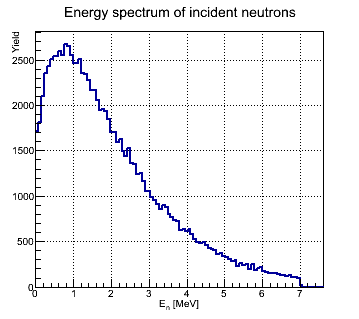 es_2inBorPoly2inPb.png | 400px]]
es_2inBorPoly2inPb.png | 400px]]
Out of the cumulative particle energy spectrum we have the following number of neutrons:
NO neutrons observed.
the following number of photons:
and the following number of protons:
Protons should not be there due to incorrectly adjusted EM physics part of geant4. See Part II below.
Stage 4 of the simulation
The energy spectrum of all possible particles entering the analysing detector after adding 2 cm of Aluminium to 2 layers of 1" lead placed at the sides of the 2" borated poly is presented below:
NO neutrons observed.
the following number of photons:
and the following number of protons:
Protons should not be there due to incorrectly adjusted EM physics part of geant4. See Part II below.
Future work
Now we should see the correlation of the energy lost per particle for the given event to understand how many particles will produce energy loss in both detectors high enough to be considered as a source of cross talk. Also the effect of interaction of bremsstrahlung radiation with the material of the neutron detector and the corresponding cross talk should be considered.
Part II
Experimental setup simulated. Neutron detectors are in red, shielded with 2" Pb on the top (cyan). There are 2" Pb+ 2" borated poly (in green) + 2" Pb in between the detectors. Substrate is made of 0.5 m concrete. Reflectors on the sides are made of 20 cm concrete blocks also. Air is around the whole setup. In the picture below one can see one neutron event generated in the first neutron detector filled with BC-420. The second detector (filled with vacuum and efficiency 100 %) was used to detect the particles that could make through the shielding and produced a false coincidence signal:
The energy spectrum of neutrons used in this simulation looked like with different angular distributions (isotropic and directed):
Total number of neutrons initially sampled was . Neutron energy spectrum detected by second neutron detector ( and vacuum inside) in the case when two neutron souces were used: (1) isotropic (iso) volume neutron source inside the first neutron detector filled with BC-420, (2) directed neutron source when neutrons hit the first detector filled with BC-420 perpendicularly to its surface (this source was placed inside the shielding so no scattering initially by Pb shielding):
Photons were generated through reaction on the materials of borated poly and concrete. Energy spectrum of the photons is presented below for both types of neutron sources:
Cumulative energy spectrum of all particles that hit the second detector had the following energy spectrum:
According to the simulation the cross talk effect () can be defined in the following way. Assuming that both detectors had 100 % efficiency, i.e. all the particles that hit the detector volume produced detectable signal, and 0 keV energy threshold
